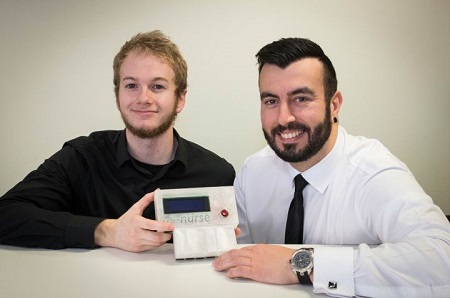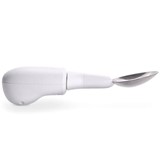An important task for any nurse is to ensure you have your medicine correctly and on time and eNurse has just passed that test with flying colours.
The system has won the best technical development award and received an overall 'highly commended' in Telstra's 10-week M2M (Machine to Machine) University Challenge for students from across Australia. It competed against 20 other projects.
The ground-breaking invention uses ever-increasing mobile device wireless networks to bridge the gap between medical professionals and patients.
Reducing time, optimising outcomes
It aims to minimise the time nurses, caregivers and medical professionals spend on routine or prescription medication and treatment while optimising health outcomes, for example by alerting staff and carers when patients do not take their medicine.
Designed for the professional medical market, healthcare practitioners and institutions, eNurse allows for easy monitoring of patients without the need to always schedule appointments or manual check-ups. It enables doctors to view and modify patient information and add medical data remotely when appropriate.
The project is the brainchild of a five-member team of final year computer and electronic engineering students from La Trobe University in Victoria who impressed the judges with their ability to produce high-quality code, system and hardware design.
Congratulating the team on its result, Deputy Vice-Chancellor (Research) Professor Keith Nugent, said Australia has a rapidly aging population with increasing numbers of people with chronic diseases, struggling with early dementia or living alone in regional and remote areas.
"This will be a growing and costly challenge for our medical services in the years ahead," Professor Nugent said.
The eNurse group comprises team leader and senior software engineer Sam Oliver, chief engineer Matthew Felicetti, business analysts Nghia Tran and two software developers, Micheal Hill and James Hegedus.
How it works
Oliver said the hardware comprises a very small central hub that controls custom-built attachments such as a 'Smart Pillbox' and a web server for data management as well as communication between devices, doctors, nurses, pharmacists and carers.
The eNurse pillbox alerts patients by green light and audio commands to such things as when and what medication to take, whether to have it with water or milk, before or after a meal.
It then checks whether the compartment of the box containing that medication dose has been accessed and can notify relatives or carers if patients or family members are not complying with medications for any significant length of time.
Project coordinator and lecturer in Engineering and Mathematical Sciences, Dr Eddie Custovic, said the students have already formed a company called Cortex Medical Solutions.
The next step involves finding business partners and organisations to expanded eNurse for use with other medical devices, such as heart rate, glucose, blood pressure monitors and breathalysers.
"In a vast nation like Australia, providing high-quality healthcare is a serious and costly challenge," Dr Custovic said.
"Our device aims to assist doctors, nurses and carers to provide 21st century healthcare to all Australian citizens no matter where they live."






